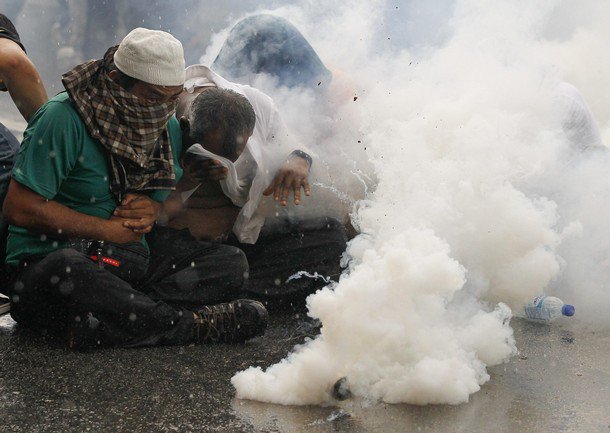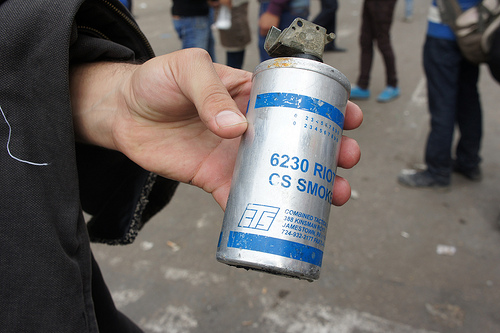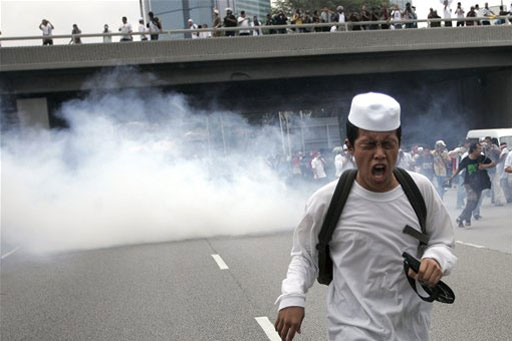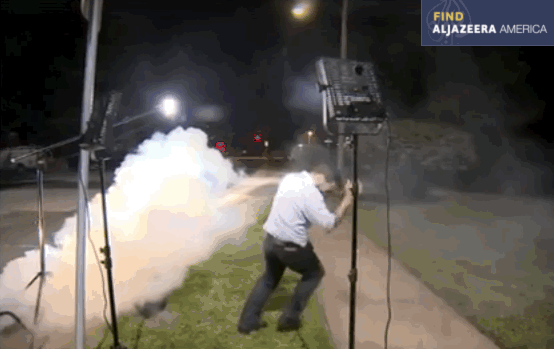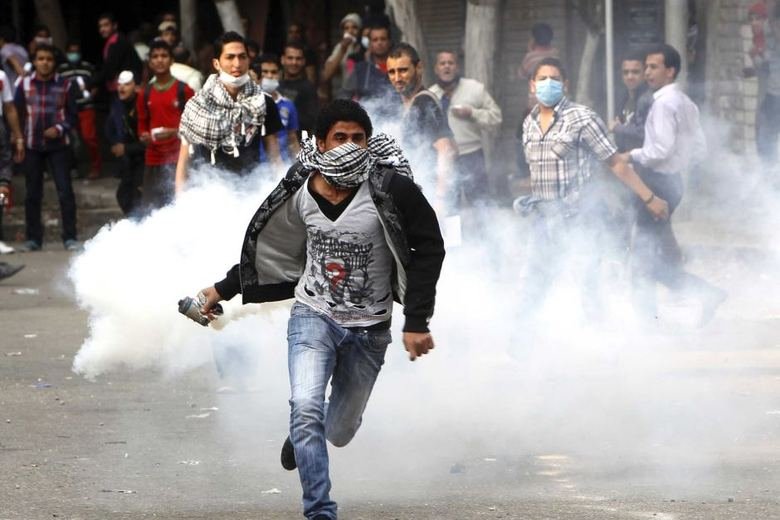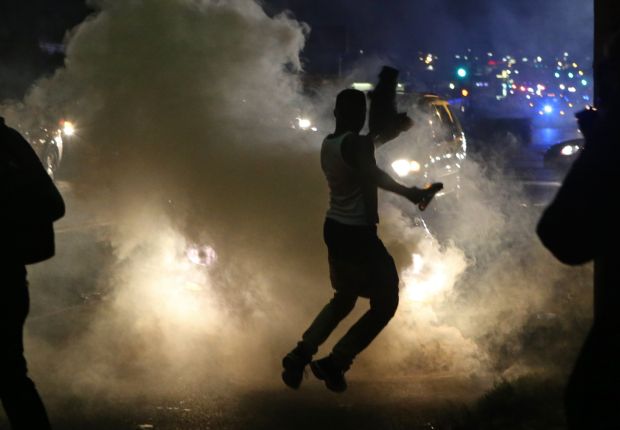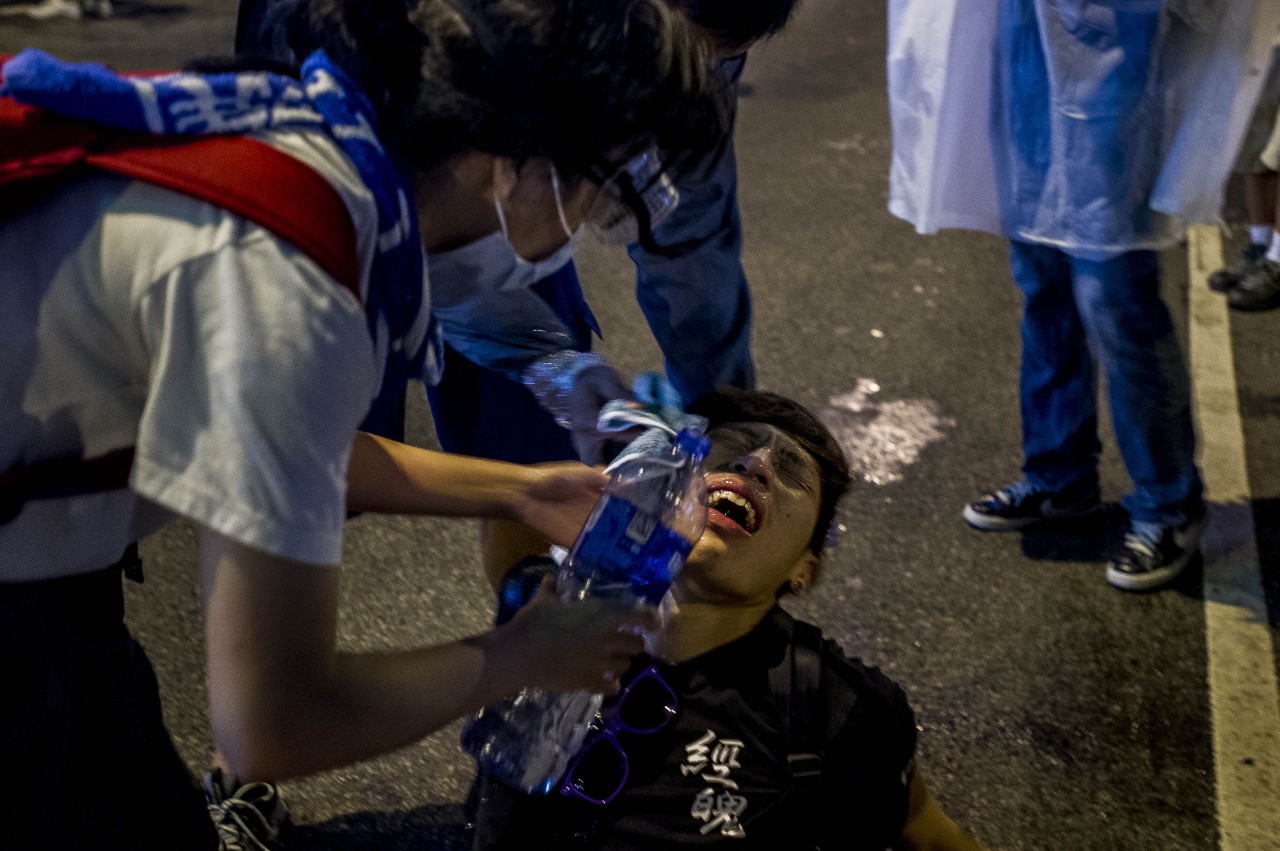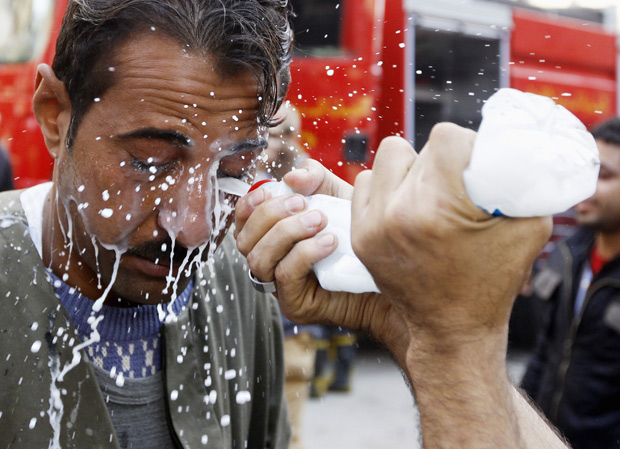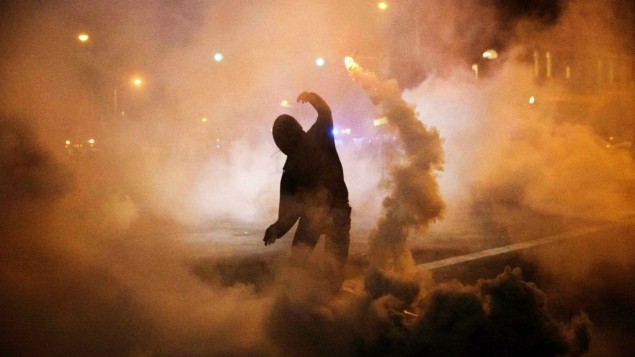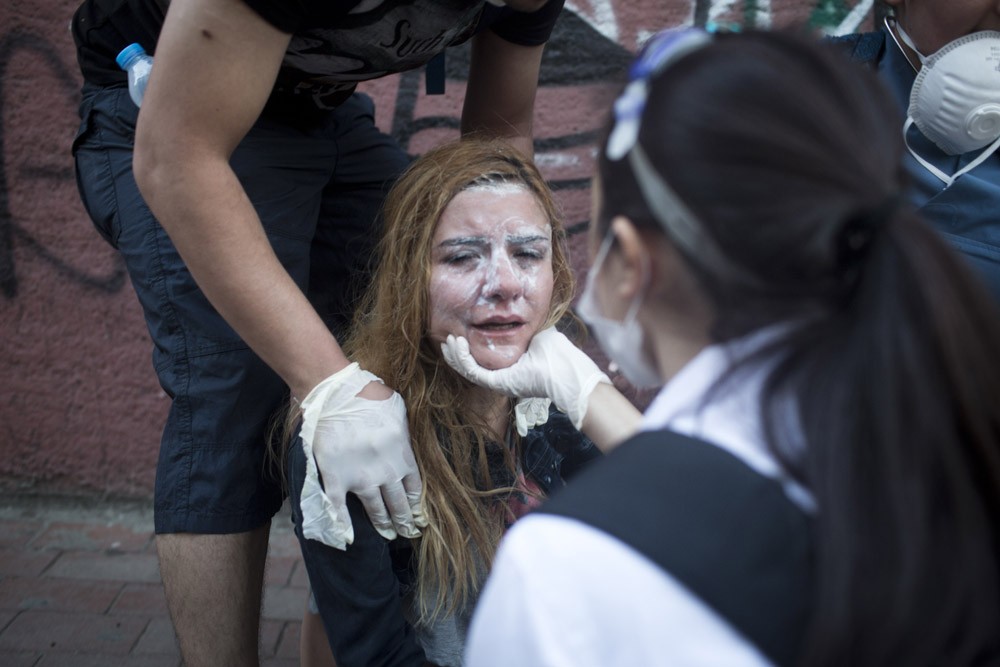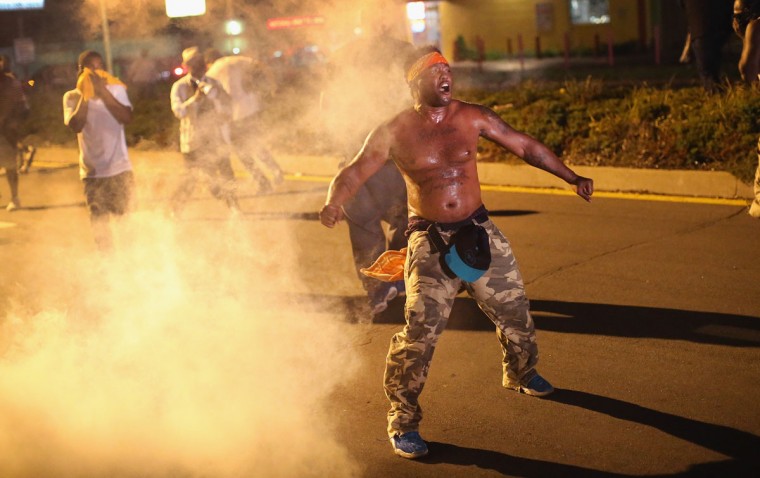10 Best And Worst Things To Do When Tear Gas Hits You
The ultimate guide on how to prepare for a potential encounter with tear gas, with tips on how to respond, and how to prevent yourself from getting hurt.
Tear gas is often used to control crowds, disperse riots and subdue individuals. It has been used so often that tear gas is synonymous with protest crowd control.
With Bersih 4 approaching this weekend, we're going to take a look at the do's and don'ts when dealing with tear gas. But before that, we have to understand how does tear gas works.
There are three forms of tear gas: CS (chlorobenzylidenemalononitrile), CN (chloroacetophenone) and pepper spray
Tear gas that you hear about on the news, in the form of CN or CS, is often used by law enforcement when they are faced with a combative crowd. The tear gas is launched in the form of grenades or aerosol cans so that the liquid becomes an aerosol. Both CN and CS are irritants -- they irritate mucous membranes in the eyes, nose, mouth and lungs, and cause tearing, sneezing, coughing, etc.
Pepper spray is an inflammatory agent that causes inflammation in the eyes, nose and mouth. Its effect is more debilitating, but you have to hit someone with it directly for it to be effective. This makes it more useful for self-defense against an individual. It is also useful against attacking dogs and bears.
Despite its name, tear gas is a form of aerosol, not gas. CS is solid at room temperature, it breaks down when combined with liquid agents.
The term "tear gas" is a bit of a misnomer: The canisters in a police department's arsenal contain a solid powered chemical, rather than a gas. When activated, the chemical is aerosolized, creating a dense plume of crystallized chemicals that hang in the air.
 gizmodo.com
gizmodo.com
So, what does it do?
Exposure to tear gas causes a trademark set of symptoms: severe burning of the eyes, mouth, throat, and skin. Victims cough, choke, and retch, with tears and mucous streaming uncontrollably from their eyes, noses, and throats. In response to the pain, victims' eyelids snap shut. Some report temporary blindness.
Depending on the type of tear gas used, symptoms come on nearly instantly. CS gas kicks in within 30 to 60 seconds, causing irritation to the skin, eyes, and breathing passages. Pepper-based OC gas sets in even more swiftly, and can even incapacitate its victims.
 gizmodo.com
gizmodo.com
Now that we've given you a quick lowdown on the types of tear gas and its properties, here are some do's and don'ts if you are ever caught in the thick of it, especially with Bersih 4 coming up this weekend
First, we'll talk about the things you should do when you're hit with tear gas, following these instructions can help keep you and the people around you safe and make it as painless as possible
1. Hold your breath and close your eyes if possible
Breathing in CS is like getting kicked in the chest by a donkey. It hurts, and it will take effect quickly. Tear gas also results in a whole lot of mucus flowing from your nose. Breathing in tear gas can even induce vomiting. Your first reaction should be to immediately hold your breath. Just don’t suck in a big breath first.
CS is a solid at room temperature so imagine tiny particles making their way into your eyes and tear ducts. Your eyes immediately overflow with tears and a stinging, burning sensation. Closing your eyes may be your best bet.
2. Get out of the area and move to higher ground
A CS canister, once shot, starts as a small concentrated cloud that quickly spreads to cover a larger area. In the first few seconds, you need to safely get away before you find yourself in a cloud.
Try to get to high ground – most tear gas clouds are heavier than air, so the highest concentrations tend to sit nearer to the ground.
3. Quickly cover your mouth with a cloth soaked with vinegar, goggles or a gas mask
The best defense against tear gas is a gas mask, but if you don't have a mask there are still steps you can take to minimize damage from tear gas.
A bandanna soaked vinegar and tied tightly around the nose and mouth is a last resort. It is far better than nothing, but remember that it is merely a barrier and not a filter and so won’t do much for long-term protection. You can keep it soaking in a plastic bag until ready to use. Bring several, as multiple uses will render a bandanna as gassy as the air around you.
For protecting your eyes, swim goggles work well as they have a tight seal. Shatter-resistance is another nice quality for goggles to have. Most goggles have air holes to prevent fogging–fill these with epoxy (glue).
4. Take off your contact lens and glasses immediately if you're wearing either
Your contacts will likely be covered in tiny CS particles. You’ll need to remove them to prevent damaging your eyes. If you wear glasses, they will also be covered and sitting right over your nose. Wash them thoroughly with soap and water so you can still see out of them without risking spreading more tear gas into your eyes.
Try to remove the lenses or get someone to remove them for you, with clean, uncontaminated fingers. If possible, avoid wearing contact lens.
5. Air out your clothes
As a particle, CS is going to get to trapped in your clothing. You can carefully pat down your clothes, keeping the wind direction and your face in mind. You don’t want to unleash a second attack on yourself from your clothes. You can also walk with your arms spread and allow the wind to do its work.
6. Rinse any exposed skin with cold water and soap
This is extremely important - wash your hands. This will ensure you do not recontaminate your eyes and face and will prevent you from contaminating other people with whom you come into contact. Also, avoid using hot or warm water to wash down because it'll open up skin pores, allowing more chemicals to sink through your skin.
7. Rinse your eyes with a LOT of water
Rinsing your eyes is tricky. As mentioned earlier, CS is a solid, so it will stick to your skin and cause a burning and stinging sensation. When you add water to the mix, it usually spreads. Your eyes will typically clear out the CS so you can see, but if you find yourself having trouble, rinse with a LOT of water.
Some people have claimed that pouring milk and milky substances helps relieve the effects of tear gas as well, although it's not scientifically proven
People have been pictured pouring milk or milky substances on their faces after suffering from the effects of tear gas, which is just one of the home-made remedies people have claimed will help with symptoms. It is thought that milk soothes the pain induced by lachrymatory agents, or tear gas.
Finding yourself in the middle of a tear gas is pretty horrible, but some of these actions could make things worse for yourself and the people around you. Here are some of the things you shouldn't do in an event of exposure to tear gas.
1. Do not hold or pick up a tear gas canister
Tear gas grenades often explode in the air, delivering a metal container which will spew gas. This container will be hot, so do not touch it. Do not pick up an unexploded tear gas canister, since it could explode and cause injury.
2. Do not make any physical contact with your hands
As mentioned earlier, your hands will be full of tear gas. So, always keep your hands to yourself. If you need to attend to someone, make sure you wear a pair of gloves, or wash your hands clean.
3. Do not remove your clothes
Minimise skin exposure by covering up as much as possible. Any exposed skin will only cause more irritation and pain to your body.

